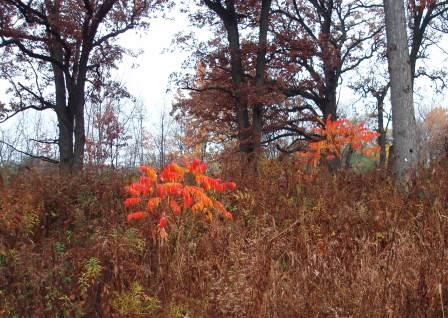by Carl Strang
This week I want to bring together a number of recent papers, combine them with earlier concepts, and summarize them into one current view on food webs: how they are structured, how they work, and especially what keeps them from falling apart.
Introduction. Food webs include all the species in a biological community and the connections between them through which energy and nutrients flow. Food webs are organized in certain ways, apparently following rules that produce stability (resistance to change) in the webs. Over time, food webs lacking such organizing features cannot last, so as the individual species within them evolve interactions which produce those features, food webs retain them and become more stable.

Food webs are composed of food chains. Here is one link: bald eagles with glaucous-winged gull, Adak Island.
Component Communities. One important way in which food webs are organized is through component communities, the groups of consumers associated with each particular plant species (Thébault and Fontaine 2010). This specialization produces stability, because a disturbance associated with a fluctuation in a species largely is confined to that species’ component community. While too close a duplication of ecological roles within a component community detracts from stability (competition threatening to drive some species to local extinction), such duplication in a mutualistic group (e.g., a number of pollinators shared by a group of plant species) contributes to stability (a given plant or pollinator has other species to work with if one is lost; Thébault and Fontaine 2010).
Switching. A trophic level is a step in the flow of energy and nutrients, with producers (most commonly, green plants) occupying one level, primary consumers (plant eaters) occupying the next level, and so on. Here an important contributor to food web stability is the degree to which it contains generalist consumers (Thompson et al. 2007). If one food becomes scarce, the generalist can switch to another. If one food becomes abundant, the generalists can focus on it. Switching tends to keep populations as well as communities stable, because increasing numbers of an abundant species draw attention that keeps them in check, allowing less common species to recover and, therefore, persist (Neutel et al. 2007).
“Top Down” Control. The action of predators and parasites, keeping prey in check, also limits the degree to which primary consumers endanger plants (“top down” control of food webs; Estes et al. 2011). At the same time, this limitation on populations provides a check that limits the ability of competitive dominants to drive other species to local extinction. Another, more evolutionary process which limits competition is the development of guilds, groups of ecologically similar species which specialize in such a way that they subdivide a resource.
Diversity and Stability. Food webs become less stable as they become simpler (less diverse), because they do not have enough species to provide such compensatory checks and balances (Anderson and Sukhdeo 2011, Irmis and Whiteside 2011). Low productivity (resulting from a limitation in nutrients, for example) is the most common condition leading to such simpler systems in which food webs are controlled from the production end rather than by consumers (Cebrian et al. 2009).
Some Recent Literature
Anderson TK, and MVK Sukhdeo. 2011. Host Centrality in Food Web Networks Determines Parasite Diversity. PLoS ONE 6(10): e26798. doi:10.1371/journal.pone.0026798
Cebrian J, et al. 2009. Producer Nutritional Quality Controls Ecosystem Trophic Structure. PLoS ONE 4(3): e4929. doi:10.1371/journal.pone.0004929
Estes, James A., et al. 2011. Trophic downgrading of planet Earth. Science 333:301-306.
Irmis, Randall B., and Jessica H. Whiteside. 2011. Delayed recovery of non-marine tetrapods after the end-Permian mass extinction tracks global carbon cycle. Proceedings of the Royal Society B, Published online Oct. 26, 2011; DOI: 10.1098/rspb.2011.1895
Neutel, Anje-Margriet, et al. 2007. Reconciling complexity with stability in naturally assembling food webs. Nature 449: 599-602.
Thébault, Elisa, and Colin Fontaine. 2010. Stability of ecological communities and the architecture of mutualistic and trophic networks. Science 329: 853-856.
Thompson, Ross M., et al. 2007. Trophic levels and trophic tangles: the prevalence of omnivory in real food webs. Ecology 88:612-617.













































